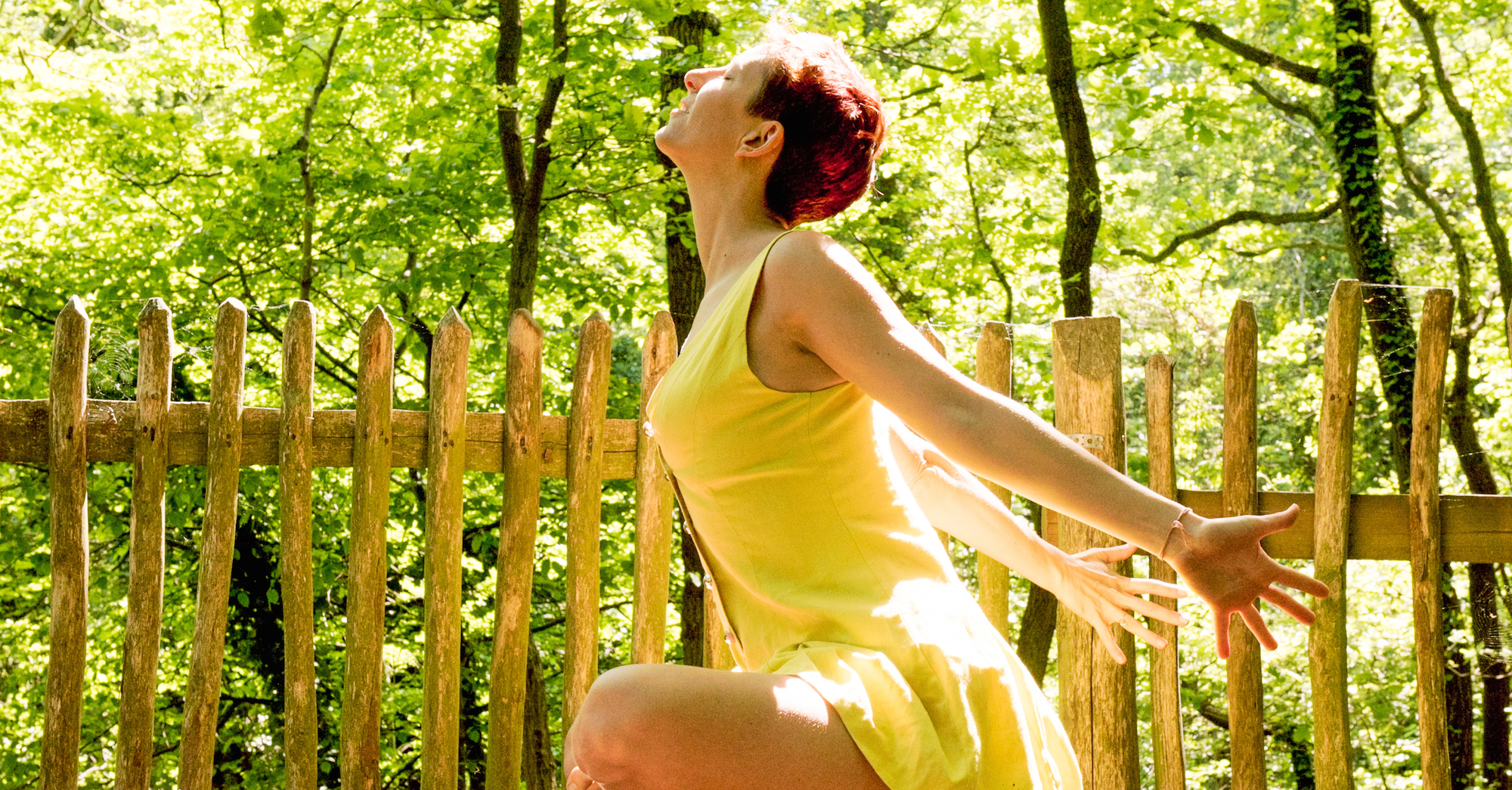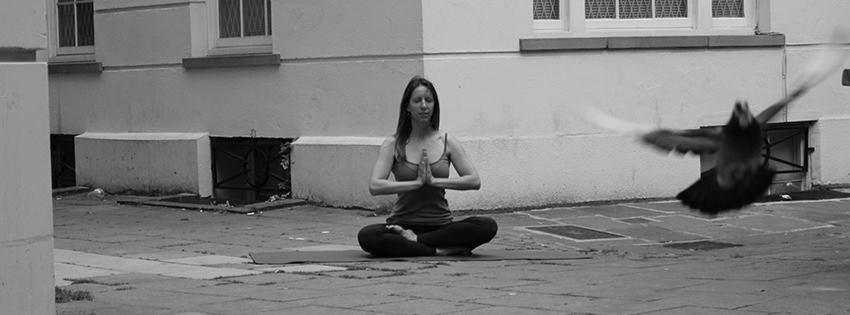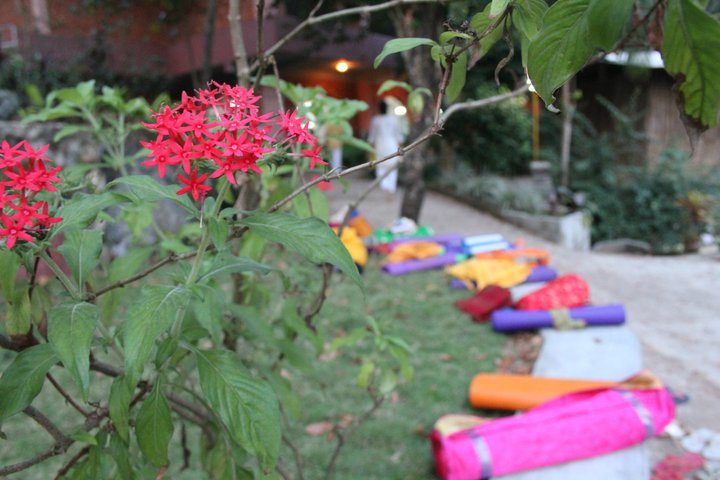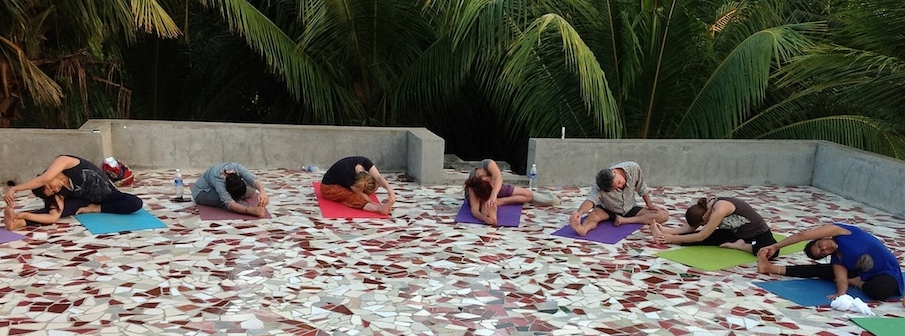- Find a quiet place
- Sit comfortably with your shoulders down, your back tall
- Place your hands on your lap or on your knees, palms facing upwards
- Close your eyes
- Breathe in through your nose and breathe out through your nose steadily, evenly, naturally
- Be aware of your physical body, scan it from your head to your toes
- Be aware of your breath, the oxygen going to your vital organs, your heart, your lungs, your brain
- Be aware of your emotions and your mind and the stillness and clarity of being in the present
- Be aware of the love you have for yourself, for others, for mother nature, for the universe
- Say OM three times, out loud or silently – for yourself, for others, for the entire universe
- With your hands in prayer in front of your heart say Namaste or thank you to yourself for making the time and space simply for yourself
What does Maha Yoga mean?
In Sanskrit Maha means Great and Yoga means Unity. The Sanskrit term Maha is used to describe Yoga that includes the combination of the four main yogic paths:
Bhakti Yoga – Devotion The devotional practices of Bhakti Yoga help to open ones heart and channel our emotions to a higher level of consciousness by appreciating the divine in all aspects of nature.
Jnana Yoga – Knowledge or Wisdom With a solid foundation of the other three paths of Yoga, the Jnana Yogi emabarks on the advanced path of deep enquiry into the true nature of the self. Through study of the scriptures and meditation on what is real and what is unreal the Jnana Yogi strives to rest in the true nature of the self.
Karma Yoga – Action Karma Yoga is selfless service without attachment to the fruits of ones actions. By serving others we are able to purify by burning the ego and developing compassion.
Raja Yoga – Physical and Mental Control Raja Yoga is formed of the eight limbs also known as Ashtanga Yoga. They are a systematic process of purification and concentration techniques gaining control of the body and mind, leading to meditation. Raja Yoga is therefore known as the Royal Path.
Swami Sivananda recognised that every Yogi, or human being for that matter, possesses and identifies with each of these elements: intellect, heart, body and mind. He therefore advocated everyone to practice certain techniques from each path. This came to be known as the Yoga of Synthesis.
Transformational Yoga – a truly integral yogic system
Transformational Yoga goes far beyond just physical exercise. While offering a complete approach to wellbeing, Transformational Yoga takes into account physical, emotional, mental and spiritual aspects of health, giving you the tools you need in order to make a difference in your everyday life.
Transformational Yoga combines different yogic systems and techniques:
- Hatha yoga asanas / physical postures
- Pranayama breathing exercises
- Mantra for relaxation and meditation
This in depth focus gives you the knowledge you need to purify your body, stabilise your emotions, focus your mind, and increase your spiritual wellbeing.
Transformational Yoga is is based on the teachings of Sri Aurobindo and The Mother, and is based on the premise that every individual harbours in the core of his or her being, the capacity to continuously experience pure consciousness – characteristics of which are good health, emotional balance and mental and spiritual clarity. It functions on a deeper level to stimulate kundalini energy to move up through the chakras – the key energy centres in the body – purifying and awakening the pure spiritual body.
Transformational Yoga is a powerful system that activates these inner resources that allow students to live in a state of inner wellbeing that lightens the pressures of contemporary living.
“Transformational Yoga is a means to relax, clean and awaken all seven chakras through yogasana, pranayama and mantra.” Swami Vidyanand, founder of the Transformational Yoga system



